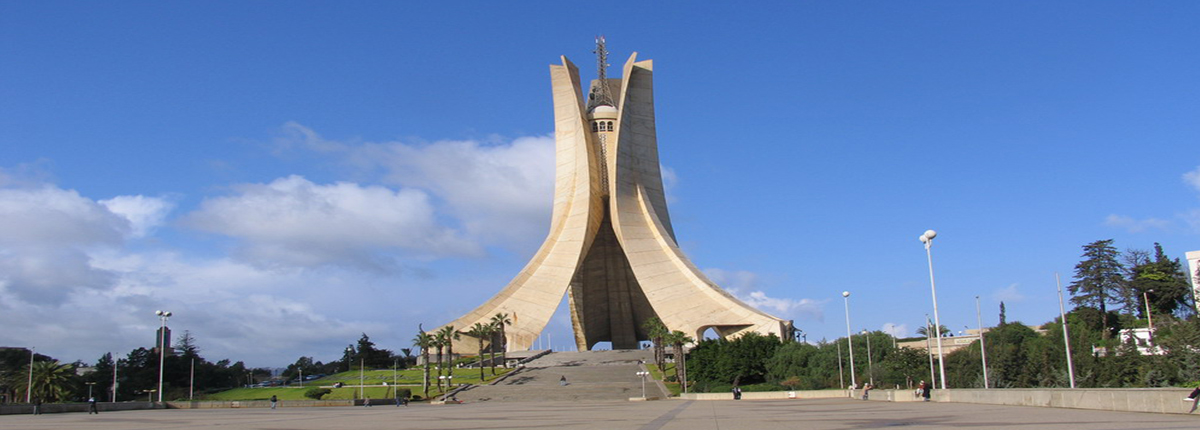CULTURAL & TOURISM

Algeria is a vast country of 2,381,741 km2. It has a variety of landforms and climates which makes it an ideal tourist destination throughout the year. Furthermore, Algeria’s natural and historical heritage offers exceptional assets that may constitute a significant contribution to the national economy.
After many years of neglect, Algeria destination has experienced a renewed interest. This progress has been marked by the emergence of new products beside the traditional discovery and relaxation stays, at a time when the Algerian government is setting up a strategy for tourism development by the year 2015.
Various activities can be practiced all over the year in the main regions of the country:
The coastal strip, along the Mediterranean Sea bordered by beaches and coves, where the main cities like Algiers, Oran and Annaba are concentrated,
The Kabylie region,
The Aures mountains,
The Mzab valley,
The Oued Souf,
The Hoggar Mountains and Tassili,
The Touat and Gourara oases.
Algeria offers a remarkable variety of opportunities for tourists:
Seaside tourism: with 1200 km of unspoiled coastline extending from the Moroccan to the Tunisian borders. Algeria is just one hour flight from Europe and enjoys a hot and dry climate during the summer;
Saharan Tourism: from October to April, the vast Algerian desert, which covers 2 million km2, offers extremely varied opportunities for tourism both in terms of escape and change of scenery (sand desert, stone desert and oases) and of cultural and human perspectives (rock paintings and engravings of Tassili, architecture of Mzab cities and oases of Timimoun, Taghit and El Oued);
Mountain Tourism: Algeria has many mountain ranges such as the Djurdjura, the Aures, the Babors, the Bibans, the Ouarsenis, the Blidaen Atlas, the Djebel Amour and the Dahra. These mountains, when equipped with adequate infrastructures, can enable the development of many activities, including the skiing which is already practiced in Tala Guilef and Tikjda stations in Kabylia and in Chréa near Algiers;
Cultural Tourism: thanks to its millennia-long history, Algeria has a wealth of monuments and historical sites ranging from the Phoenician period to the French colonization, and the Numidian Berber kingdoms and the Roman, Muslim and Ottoman eras. Three well preserved cities of the Roman period deserve to be mentioned: Tipaza, Djemila (ancient Cuicul) and Timgad. Regarding the Roman period, some tour operators recently set up a circuit for foreigners interested in cultural and religious trips called “In the footsteps of Saint Augustine”. Included in the program are visits to the basilica and ruins of Hippone, the Punic and Roman center of the ancient Calama in Guelma, the vestiges of the small amphitheatre, and St. Augustine's School in Madaure.
Algeria’s archaeological heritage
Monuments and sites scattered all over the country are vestiges of past civilizations; one such civilization dates back several thousand-years and left numerous traces of prehistoric life. The Tassili rock drawings and engravings reflect the wealth and creativity of a civilization that had settled in the Hoggar Mountains in the middle of the Sahara desert thousands of years ago.
Seven Algerian monuments and sites are now part of UNESCO’s World Heritage
 Tassili n’Ajjer Wilaya of Tamanrasset and Illizi:
Tassili n’Ajjer Wilaya of Tamanrasset and Illizi:
This site is home to one of the most important groupings of prehistoric cave art in the world. More than 15,000 drawings and engravings record the climatic changes, animal migrations and evolution of human life on the edge of the Sahara from 6,000 B.C. to the first centuries of the present era
 Djemila Wilaya of Sétif:
Djemila Wilaya of Sétif:
Situated 900 metres above sea-level, Djemila, or Cuicul, with its forum, temples, basilicas, triumphal arches and houses, is an interesting example of Roman town planning adapted to a mountain location
 Kasbah of Algiers:
Kasbah of Algiers:
The Kasbah is a unique kind of medina or Islamic city. It stands in one of the finest coastal sites on the Mediterranean where a Carthaginian trading-post was established in the 4th century B.C. The Kasbah contains the remains of the citadel, old mosques and palaces as well as the vestiges of a traditional urban structure associated with a deep-rooted sense of community.
 M’Zab Valley Wilaya of Ghardaïa
M’Zab Valley Wilaya of Ghardaïa
A traditional human habitat created in the 10th century by the Ibadites around their five ksour (fortified cities), has been preserved intact in the M’Zab valley. Simple, functional and perfectly adapted to the environment, the architecture of M’Zab was designed for community living while conforming to the structure of the family. It is a source of inspiration for today’s urban planners.
 Al Qal’a of Beni Hammad, Wilaya of M’Sila, Commune of Maadid “Bechara”:
Al Qal’a of Beni Hammad, Wilaya of M’Sila, Commune of Maadid “Bechara”:
In a mountainous site of extraordinary beauty, the ruins of the first capital of the Hammadid emirs, founded in 1007 and demolished in 1152, provide an authentic picture of a fortified Muslim city. The mosque, whose prayer room has 13 aisles with eight bays, is one of the largest in Algeria.
 Timgad, Wilaya of Batna:
Timgad, Wilaya of Batna:
Timgad, Wilaya of Batna: Timgad lies on the northern slopes of the Aurès Mountains and was created as a military colony by the Emperor Trajan in A.D. 100. With its square enclosure and orthogonal design based on the cardo and decumanus, the two perpendicular routes running through the city, it is an excellent example of Roman town planning.
 Tipasa, Wilaya of Tipasa:
Tipasa, Wilaya of Tipasa:
Tipasa, Wilaya of Tipasa: On the shores of the Mediterranean, Tipasa was an ancient Punic trading post conquered by Rome and turned into a strategic base for the conquest of the kingdoms of Mauretania. It comprises a unique group of Phoenician, Roman, Paleo-Christian and Byzantine ruins alongside indigenous monuments such as the Kbor er Roumia, the great royal mausoleum of Mauretania, sometimes known as the “tomb of the Christian woman”.
Algerian Arts and Crafts
Pottery is a continuously evolving art form. One can detect the influence of the Berbers, the Arabo-Muslim and oriental cultures, as well as easily noticeable Turkish nuances and “Hispano- Moorish” characteristics.

Embroidery is influenced by various meaningful cultural contributions. Commonly referred to as “Tarz”, it is a highly refined urban art form.


The emergence of copperware in Algeria dates back to the Middle Ages. It reflects a variety of successive styles and a major Turkish influence.


Inspired by a variety of sources, jewellery is the living testimony of an age-old creative force. From prehistory and antiquity to the Middle Ages, from the Roman-Byzantine era to the emergence of Islam, traditional jewellery has always expressed the very essence of those eras through harmonious symbolism.



The large range of rugs available clearly demonstrates the Algerian cultural melting pot. Rugs can be of Berber, Maghrebian, Arabo-Muslim, African, or even Oriental inspiration.
THE AMBASSADOR
INVEST IN ALGEIRA
VISA
QUICK LINK
- Forms to download
- "12S" Birth Certificate
- Passport & ID Card
- Civil Status
- National Service
- Terminating Residency
- Students



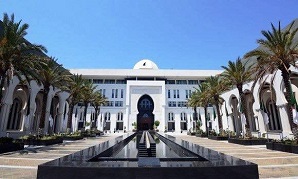
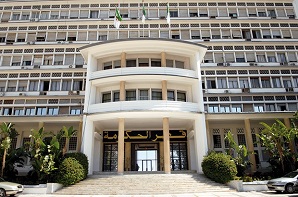
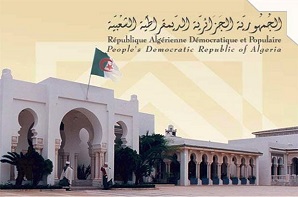
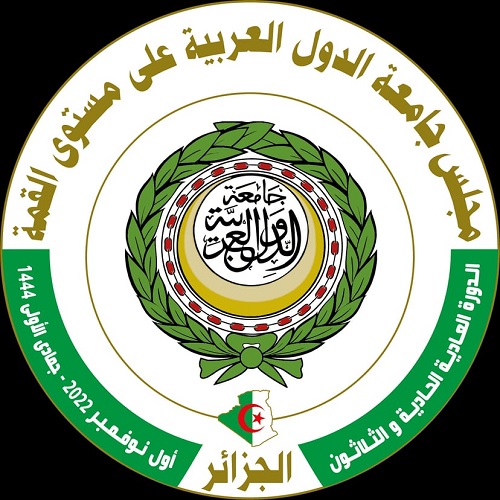

PHOTOmore

